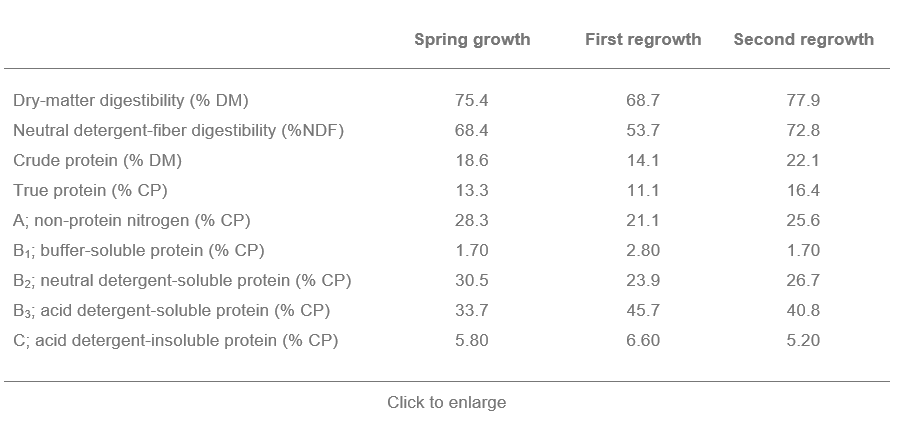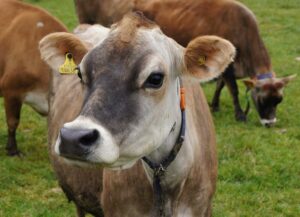Aurora Alaguero Cordobilla
When dealing with ruminant feeds legumes play a key role and are oftentimes preferred by dairy farmers. Among their most desirable characteristics are their yield and nutrient concentration when grown and harvested properly. One common species used for this purpose because of its high nutritive value is red clover (Trifollium pratense).
A trial conducted in Sweden (Sousa et al., 2019) evaluated yield and nutritive value of one common European red clover cultivar over two years, comparing digestibility and crude protein quality during one harvest season. The red clover used in this study was Titus (4n), an early maturing cultivar with rapid growth capacity.
It was sown at a seeding rate of 24 kg/ha in three replicated blocks with barley as a companion crop. Plots were fertilized during two years with different amounts of nutrients (K, P, S and Mg) to account for soil deficiencies. Some parameters obtained during or at the end of the experiment were: in vitro organic matter digestibility (IVOMD), dry matter (DM), crude protein (CP), neutral detergent fiber (NDF) and indigestible NDF (iNDF), water soluble carbohydrates (WSC), metabolizable energy (ME) plus some other shown in the table below (Table 1).
Table 1. Nutrient composition and DM yield of the red clover cultivar Titus (4n)
The results obtained in this experiment showed that clover had excellent in vitro organic matter digestibility, adequate ME, and low indigestible NDF during the two years of the study. Dry matter and protein yields were greater during the first year but were lower than desirable during the second year.
A more in-depth study was performed to determinate in vitro digestibility, crude protein, true protein and crude protein fractions of red clover during the second year. These results are in table 2.
Table 2. In vitro digestibility and crude protein fractions of red clover
Red clover had good DM digestibility, NFD digestibility and true protein in the spring growth and in the second regrowth. These data indicate that cattle fed red clover could see their performance improved. Acid detergent-soluble protein values were high throughout the harvest season. Nevertheless, clover showed some low values in the harvest season such as non-protein nitrogen and neutral detergent-soluble protein. A high concentration of acid detergent-soluble protein and a low concentration of non-protein nitrogen and neutral detergent-soluble protein indicated that red clover had a greater rumen undegradable-to-degradable protein ratio.
In conclusion, red clover is a good alternative in ruminant feeding systems when under unfavorable soil conditions for alfalfa, it is necessary however to take into account its reduced yield during the second year, with lower yields compared to other legumes species.
Reference
Sousa, D.O., Hansen, H.H., Hallin, O., Nussio, L.G., Nadeau, E. 2020. A two‐year comparison on nutritive value and yield of eight lucerne cultivars and one red clover cultivar. Grass and Forage Science. 75(1): 76-85.
© 2020 Dairy Knowledge Center. All Rights Reserved.











